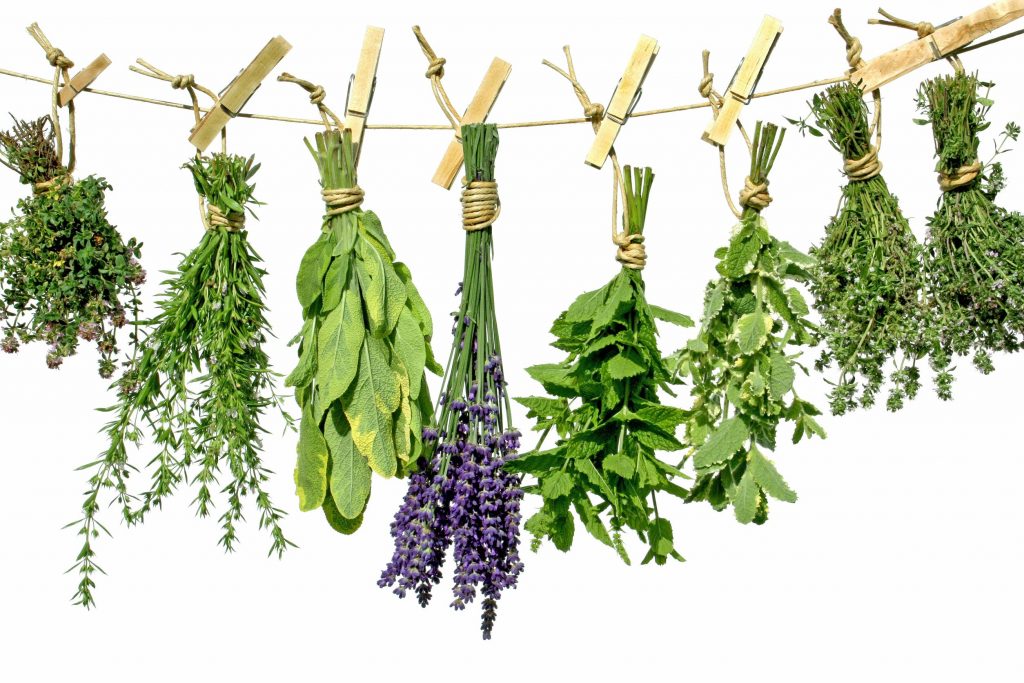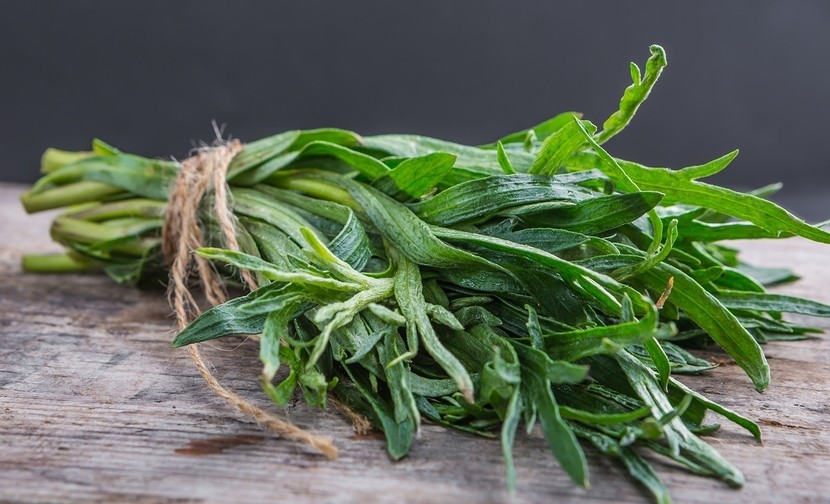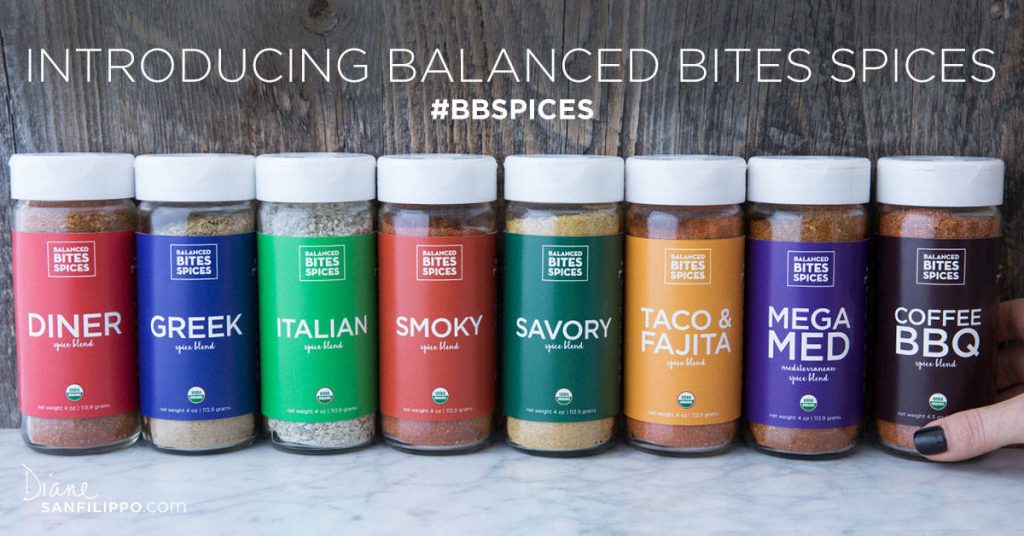This is a long post, so I’ll cut to the chase. Herbs and spices are among the most nutrient dense foods on the planet, and they’re packed with powerful essential oils that kill bacteria, boost antioxidant protection, and prevent disease.

Try adding a few of the top 10 herbs mentioned below (and top 10 spices discussed here) to your daily routine, and you’ll quickly notice improvements in digestion and elimination, energy levels and cognitive performance, and even hunger and cravings.
1. Rosemary
Often added to olive oil and fish oil supplements to prevent oxidation, this carnosol rich herb is the perfect arterial protector. With research showing it’s unique ability to inhibit the formation of HCAs (heterocyclic aromatic amines) when frying meat, improve the oxidative stability of butter, and even encourage the up-regulation of the ever-important antioxidant glutathione.
Rosmarinic acid, the active ingredient in rosemary, also appears to help with nasal congestion and allergy symptoms. Making it the perfect ingredient for soups, and teas, in addition to your standard meat and vegetables.
2. Thyme
Thymol, the antioxidant in thyme, is a potent infection inhibitor. This member of the mint family is a popular ingredient in mouthwash and cleaners, and it’s been used in tea format to treat everything from athletes foot to yeast infections.
Thyme is also effective as a cooking oil stabalizer (1, 2, 3), and when combined with rosemary and garlic, it makes for a nice dry rub (especially on lamb!).

3. Oregano (Marjoram)
As far as antioxidant rankings go, oregano is a powerhouse. With 42 times more antioxidant activity than apples, 30 times more than potatoes, 12 times more than oranges, and 4 times more than blueberries!
In fact, oregano is so powerful as an antiviral and antibacterial agent that it’s proven just as effective in killing E.Coli and staph as penicillin. Making it the perfect addition to your meals to protect against food-borne pathogens (and carcinogenic cooking compounds), and the perfect addition to your soups and teas to protect against coughs, colds, and sickness.
Keeping in mind, of course, that a little bit goes a long way with oregano. Especially if we’re talking about the dried form; which oddly has a stronger taste than the fresh leaves.
4. Sage
This herb isn’t exactly on the popular list, and it doesn’t get as much publicity as the anti-inflammatory spices for supporting the brain. Which is unfortunate, when you discover that the oil found in sage appears to inhibit the breakdown of an important neurotransmitter called acetylcholine, that supports memory, and is often reduced in those with Alzheimer’s and dementia (1, 2).
For instance, in a 2003 study from the Journal of Clinical Pharmacy and Therapeutics researchers saw significant improvements in brain function after giving sage extract to 42 individuals with mild to moderate cognitive impairment over a 4-month period. And a long list of other studies have shown similar improvements in healthy people (both young and old) when it comes to memory and attention.

Like rosemary, this piney-tasting herb is also a rich source of rosmarinic acid, that supplies added protection against oxidizing fats and free radical damage (1, 2). So adding it to meats and sautéed vegetable combinations is encouraged.
5. Basil
If you know what pesto sauce is, or can recall the unique taste of a caprese salad, you’ve had basil. And though it’s often praised for it’s anti-inflammatory properties, and vitamin K content, you should consider adding it to your meals for the extra protection against bacteria. With research showing that it can directly disarm a long list of infections (including listeria, staphylococcus, E. coli) with it’s various volatile oils – estragole, myrcene cineole, eugenol, limonene, etc (1, 2, 3, 4).
Not surprisingly, it’s high concentration of polyphenols and flavonoids also means an increased resistance to cellular damage (1, 2) – both during and after consumption. The interesting part being, that this appears to hold true for all parts of the plant, and all varieties (of which there are more than 30). With Holy Basil being the most popular, and most widely studied, for healing (1, 2).
6. Mint
Even though the thyme and oregano (or marjoram) discussed above are part of the mint family, when we speak about mint from a culinary standpoint, we’re talking about the peppermint and spearmint leaves that taste like toothpaste and chewing gum. That, along with being an effective option for fighting sickness and infection, provide a healthy dose of digestive and gastrointestinal support (1, 2).
For instance, one study from 2007 in the journal Digestive and Liver Disease, had more than 75% of the 57 participants experience significant relief from their irritable bowel syndrome symptoms (abdominal bloating and pain, excess gas, diarrhea, constipation, etc) after 4 weeks of supplemental peppermint oil.

How, is up for debate. But the evidence appears to suggest it’s a combination of relaxing the gut muscles, stimulating enzyme production, and killing some of the bad bacteria overgrowth (yeast, parasites, fungi, etc) that’s occurred in the small intestine.
And either way, it should give you enough reason to bring mint into your life. Whether that’s with your meals, or after them in peppermint tea format.
7. Ginseng
An adaptogen is something that brings you into balance or homeostasis. Meaning, if you’re tired it wakes you up, and if you’re wired it brings you down. Predominantly because of an increased resistance to cellular stress.
Ginseng is known for being an adaptogen herb, and it’s commonly marketed for it’s ability to enhance mental performance and mood. Although, where it’s truly beneficial is in preventing cognitive impairment and neuronal damage in the first place.
For instance, in 2003 Chinese researchers randomly selected 25 out of 40 participants with mild to moderate dementia, and saw significant memory improvement after 12 weeks of ginseng extract supplementation compared to the 15-person placebo group.
This extra brain protection is likely the result of reductions in stress, but Ginseng’s anti-inflammatory properties could also be playing a role (1, 2).
Outside of cognitive enhancement, it’s also been tied to improvements in blood sugar, boosting the immune system, and even treating sexual dysfunction (1, 2).
8. Tarragon
As we’ve discussed, sleep and gut health are critical components of a long, healthy life, and they’re commonly neglected in the 21st century. Fortunately, tarragon can help…with both! Provided, of course, that you get used to adding to your food on a regular basis.
Similar to mint, tarragon appears to improve digestion by stimulating enzyme production, relaxing the gastrointestinal muscles, and going to work on any bacterial infections that may be present in the gut (1, 2).
And with respect to sleep, it appears to be driven by the pain numbing properties of eugenol. Although, you’re probably better ask the French about that, as they’re the ones credited for popularizing it as an insomnia treatment. Often referring to tit as “The King of Herbs.”

9. Cilantro (Coriander)
There’s not really a sentence that can do this herb more justice than this one from the journal Phytotherapy Research in 2013:
“Due to the presence of a multitude of bioactives, a wide array of pharmacological activities have been ascribed to different parts of this herb, which include anti-microbial, anti-oxidant, anti-diabetic, anxiolytic, anti-epileptic, anti-depressant, anti-mutagenic, anti-inflammatory, anti-dyslipidemic, anti-hypertensive, neuro-protective and diuretic.”
In North America, we typically refer to the leaves of this plant as cilantro, and the seeds as coriander. With both contributing to the long list of benefits above, but the coriander seeds (Coriandrum sativum) being more heavily studied. Especially when we’re talking about the effects on blood sugar, blood pressure, and blood cholesterol levels.
10. Dill Weed
If there’s one herb you want to eat fresh and avoid cooking at high temperatures (or reserve for uncooked foods) it’s Dill – as it loses a lot of nutrients when heated, loses a lot of it’s flavour when dried, and serves as more of an antibacterial or antimicrobial addition than an antioxidant one (1, 2).
Like tarragon and the mint family of herbs, it’s best known for it’s stomach settling, digestion improving, and bacteria killing abilities. So don’t be afraid to add it to soups, salads, sauces, and lightly cooked fish.
Honourable Mentions
- Bay Leaf
- Fennel Leaves
- Parsley
- Chives
- Lemon Grass
Stay Lean!
Coach Mike
P. S. I recommend making your own herb and spice blends as opposed to buying pre-mixed varieties (click here for my 13 DIY recipes). However, if I was to recommend one brand of pre-mixes, it would be this one from Balanced Bites...
RELATED LINKS:
The Truth About Salt & Hypertension
Herbs And Spices - My Top 10 List For Spices
